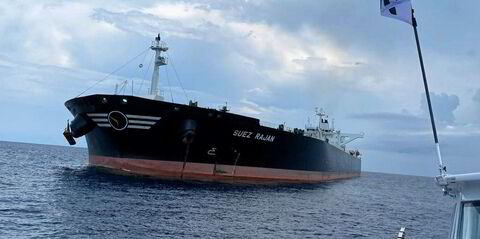Flex LNG chief executive Oystein Kalleklev believes Qatar may need extra LNG carrier capacity due to the ongoing Red Sea disruption.
With no vessels going through the Suez Canal because of Houthi attacks on shipping, the John Fredriksen company’s boss told an earnings call: “Qatar, they might get a bit short on shipping and need to re-let in some ships in order to have sufficient capacity to move the Qatar volumes to Europe.”
But he added that the situation will depend more on the trading patterns seen.
“Who is going to be the major puller of cargoes this year?” Kalleklev asked.
“Is Europe going to be desperate to be the buyer of first and last resort? Or is Europe going to stay a bit more back now and leave some more room for the Asian countries that will affect the market for Panama?” he continued.
The company said a voyage from Ras Laffan to southern Europe would take an 14 extra days around South Africa.
Additional freight costs and shipping time are likely to be deemed unsustainable for Middle Eastern LNG exports in the long term, the owner argued.
In the short term, there will be increased tonnage demand due to longer voyages.
This could mean possible trade re-arrangements or an increase in free on board sales from the Middle East, Flex LNG said in a presentation.
Kalleklev said his company has been frank about the fact that newbuilding deliveries will mean there are more ships than cargoes.
Scrapping on the agenda
“But on the other hand we also do expect that finally we will have scrapping,” he told the call.
“Usually people don’t scrap the ships in a good market. We had a good market [in] 2021, 2022, 2023. It doesn’t give a lot of incentives to scrap a ship,” the CEO said.
“But keep in mind when these ships are getting older and they are already a bit outdated on the technology. Are you then willing to commit a lot of money to drydock those ships?” Kalleklev added.
He also argued that the price curve of gas will be important.
“Because if you have a contango structure … you will have floating storage which typically any year can take out 40 to 50 ships,” he said.





